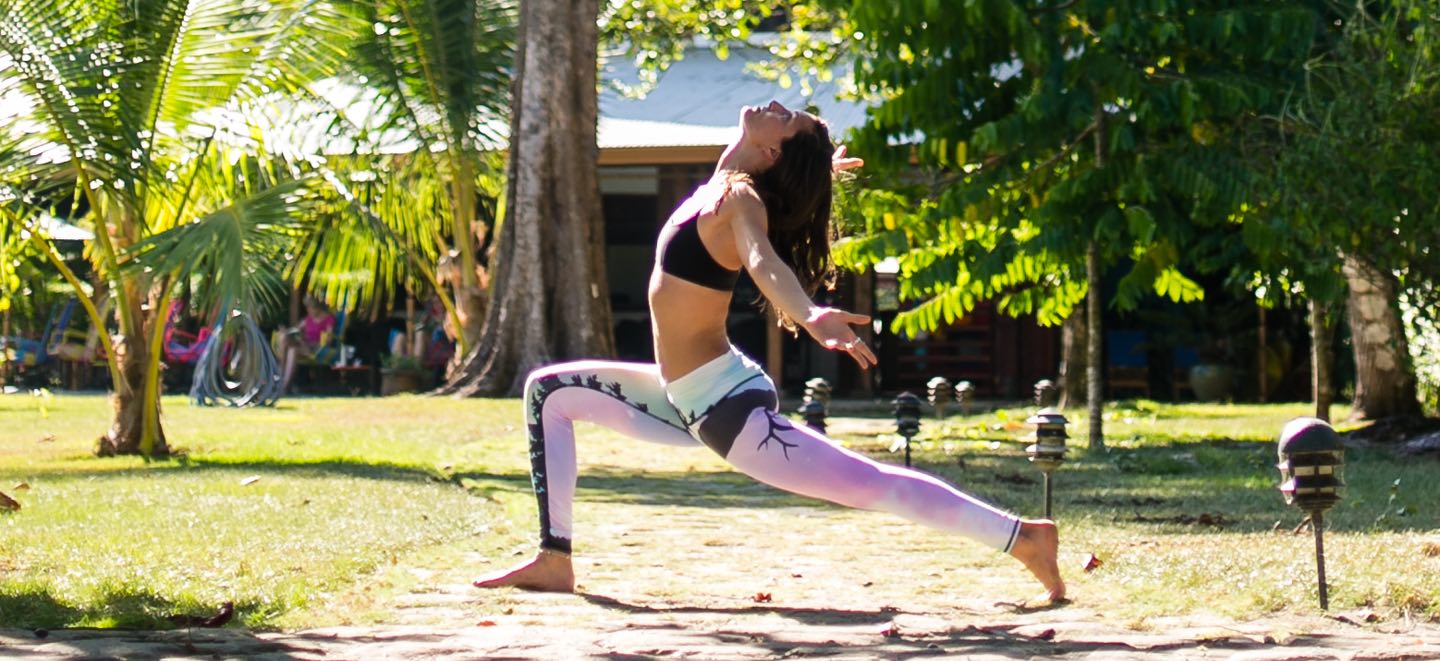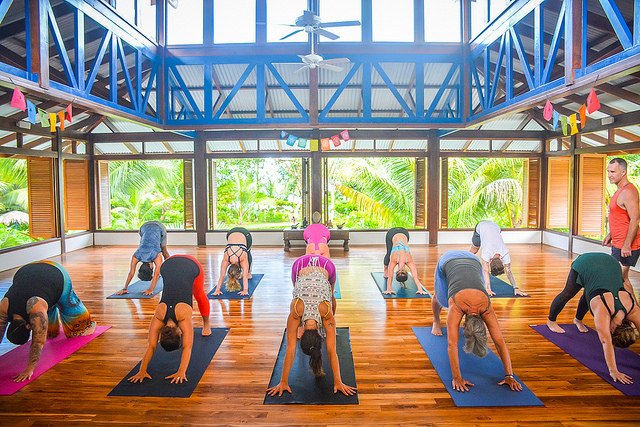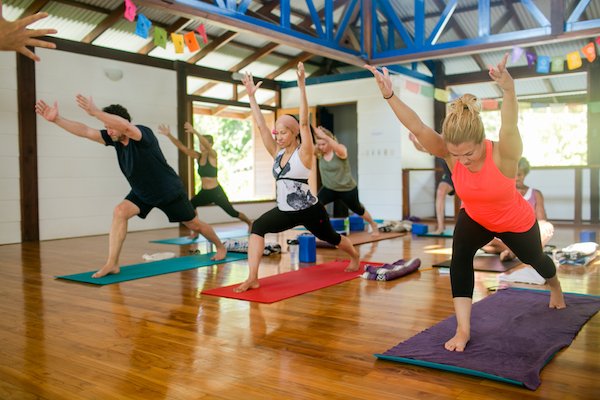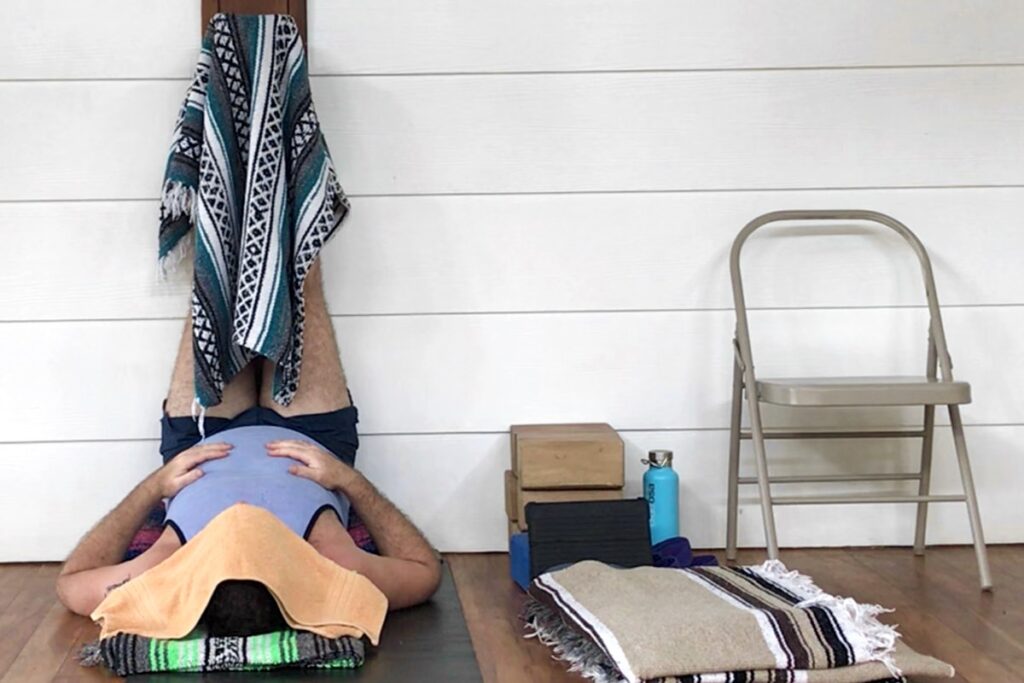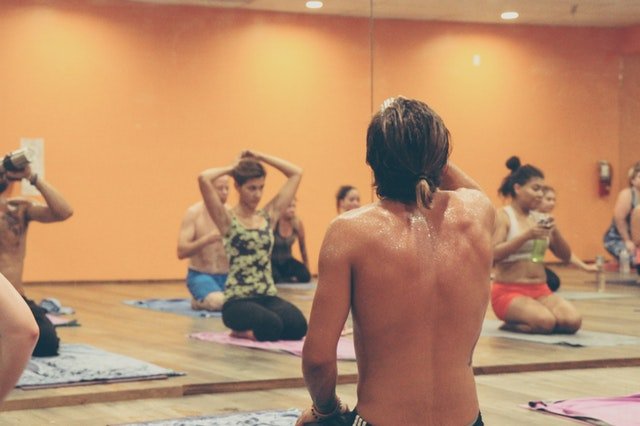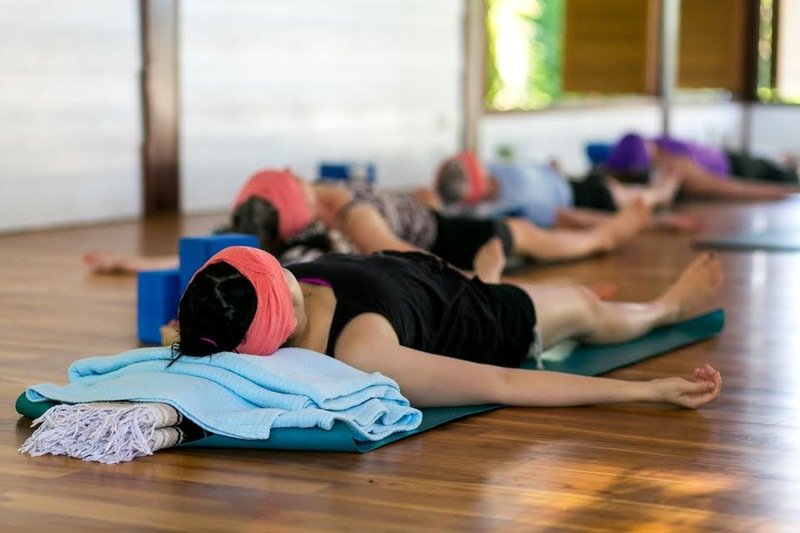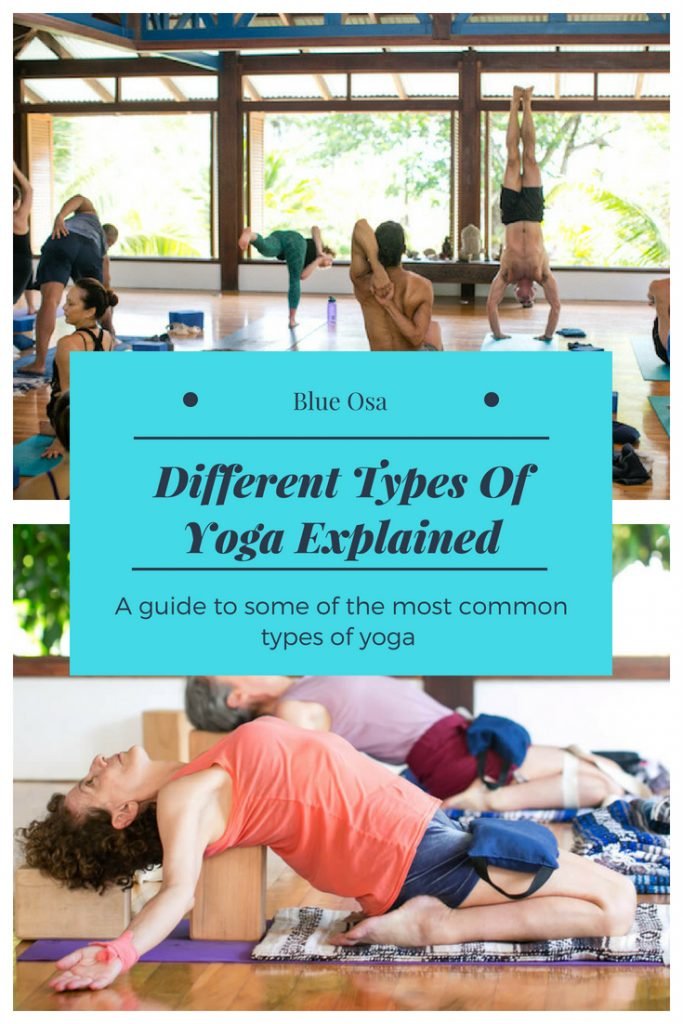“So, what type of yoga do you practice?”
If you’re a yoga lover, you’ve likely heard this question before. There’s only one problem…
Questioning the style of yoga someone practices is a lot like asking: “What’s your job?” or “Where are you from?” It places people in unnecessary categories.
The thing is, we humans love to label each other — to know if someone is ‘one of us’ or if we’re ‘one of them.’ But the practice of yoga is to remove these judgments and to connect on a higher level of consciousness.
At Blue Osa, we welcome all kinds of yoga retreats and enjoy the different yoga types that attract unique individuals to Costa Rica.
We also believe in a holistic approach to yoga that prioritizes “Function Over Form.” Influenced mainly by the Himalayan Tradition of Yoga, we combine the timeless wisdom of Patanjali’s Yoga Sutras and teachings passed down by a long line of yoga masters from Hatha, Iyengar, Vinyasa, and Kundalini.
Yoga Is For Everyone
We believe yoga is for everyone — and we don’t believe you must follow only one yoga methodology to practice yoga “correctly.”
Now, let me say this:
It can be helpful to understand the different types of yoga, so you can choose the yoga type that best fits your needs. Just remember there are many crossovers between the yoga types — and you need not feel locked into one specific school of teaching. This quote sums it up nicely:
There are different pathways – be it Zen, tantra, karma yoga, or jnana yoga. Different ways have been devised to do the same thing for different types of people according to their temperament. – Frederick Lenz
So, with that in mind, let’s explore the different types of yoga so you can select the style of yoga that works for you!
Why we practice yoga: Understand the practice to choose your yoga type
Before we dive deep into the different types of yoga and their benefits, let’s quickly recap what yoga is and why we practice it:
Patanjali’s Yoga Sutra’s 1.1-1.4 defines yoga as the ability to focus the mind inward, see clearly through the different preconceptions of our physical existence, and experience your true nature beyond the senses to connect with the unity and oneness of us all.
Based on this definition and Patanjali’s Yoga Sutras, here are the yoga principles taught during Blue Osa’s yoga teacher trainings:
1. The Asanas (physical shapes) that we make are a part of the path toward learning to observe and control our body’s reactions.
2. Pranayama (breathing) exercises can soothe emotions and ease the fluctuations of the mind or invigorate our system and get us moving when our energy is sluggish.
3. Meditation allows us to focus the mind inward and witness our thoughts with compassion to connect to our deeper Self. Perhaps you experience enlightenment here or maybe some peace.
Your chosen yoga practice reflects where you are on your current path. The path for each of us differs significantly, and different types of yoga might suit you at different times in your life (or even day today!) Choose the yoga types that support your present life — the ones that help you to calm the mind and connect to your deeper Self.
TO FIND OUT YOUR STYLE OF YOGA, ASK YOURSELF:
- What are my reasons to practice?
- Do I move to calm the physical senses in my body?
- Do I need to work out a problem?
- Am I seeking focus and clarity?
- Do I want to manage my emotions better, e.g. anxiety?
- Does my chosen yoga style support my reasons to practice?
The different types of yoga and their benefits:
What are the different types of yoga and their benefits? And how many types of yoga are there?
As yoga continues to grow in popularity, so too do the styles of yoga out there. So, while this isn’t an exhaustive list, here are the most popular yoga types to know:
The First Style Of Yoga – Hatha Yoga
Hatha yoga refers to the practice of physical postures, so it’s an umbrella term for numerous physical styles of yoga.
Most Hatha yoga classes are an excellent introduction to yoga because they teach foundational yoga postures. Many Hatha classes will be slow-paced and gentle. Studios may use the term Hatha yoga to imply a beginner-friendly practice that includes pranayama and meditation.
However, ALL STYLES OF YOGA are Hatha Yoga.
Iyengar: An Alignment Based Style Of Yoga
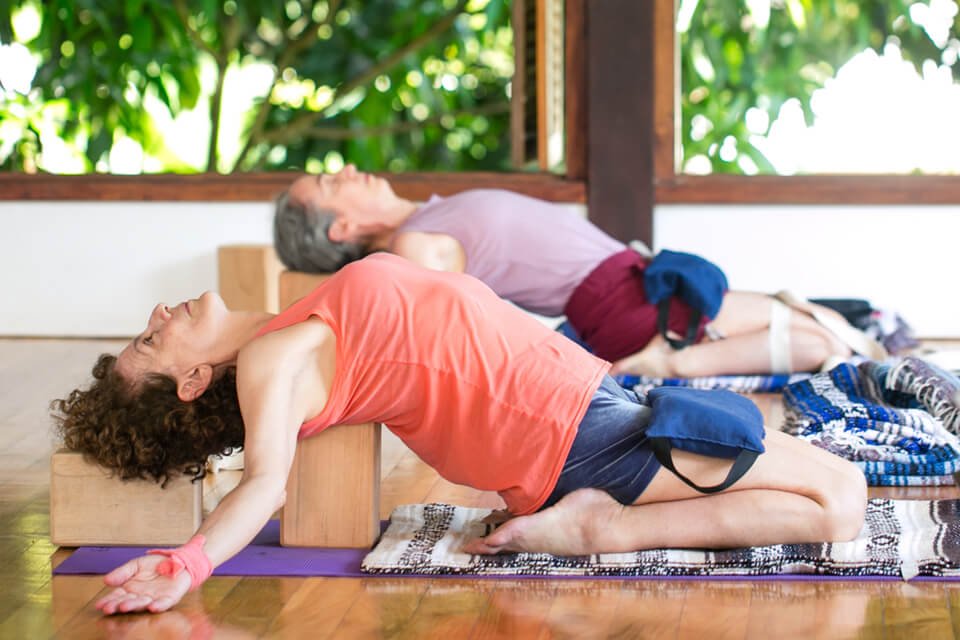
Great for people with injuries, Iyengar yoga is all about precise and detailed movements, like breaking down how to do Downward Dog.
Although this is a slower-paced style of yoga where poses are held for longer periods, it can still be physically and mentally demanding. This yoga type also uses props such as blankets, blocks, straps, and chairs that will allow you to safely and effectively achieve proper form.
Get ready for a deep dive into your alignment of the postures.
What Is Vinyasa Yoga?
Vinyasa is a fast-paced style of yoga where you quickly transition between different yoga poses. Sometimes referred to as a flow class, Vinyasa is one of the most popular contemporary styles of yoga. Be prepared for fast-paced, heart-pumping action where your movements will be synchronized to breathing techniques and usually accompanied by music that matches the rhythm of the class.
Ashtanga Yoga: A Style Of Yoga Developed By Pattabhi Jois
Ashtanga yoga is known for its demanding, physical nature. If you like routine and are athletic, you’ll likely love this style of yoga. Ashtanga follows a specific set of six sequences of postures. You will always perform the same series of poses; the sequences get more difficult as you progress through each series of poses.
Ashtanga yoga is fast-paced and rigorous, yet still beginner-friendly with the right modifications. As with all yoga, practice and all things are coming — including more advanced posture series.
Slow Down With Restorative Yoga
Restorative Yoga is all about finding stillness in a pose, often for several minutes, and sometimes with the support of a prop. This calmness engages the parasympathetic nervous system and allows for ‘rest and digest’ in the body and mind.
So, Restorative Yoga allows your body and mind to relax. It works well for athletes wanting to wind down after intense workout days or if you’re feeling stressed or anxious. It is a mild form of yoga from which everyone can benefit.
Bikram Yoga: A Hot Style Of Yoga
This style of yoga consists of a 90-minute class where you will perform a set series of 26 essential yoga poses and two breathing exercises. Be prepared to sweat as you’ll flow in a room set to 105°F and 40% humidity. Just remember to stay well hydrated! This style of yoga is excellent for flushing out toxins and can help manage weight.
Awaken Your Power: Kundalini Yoga
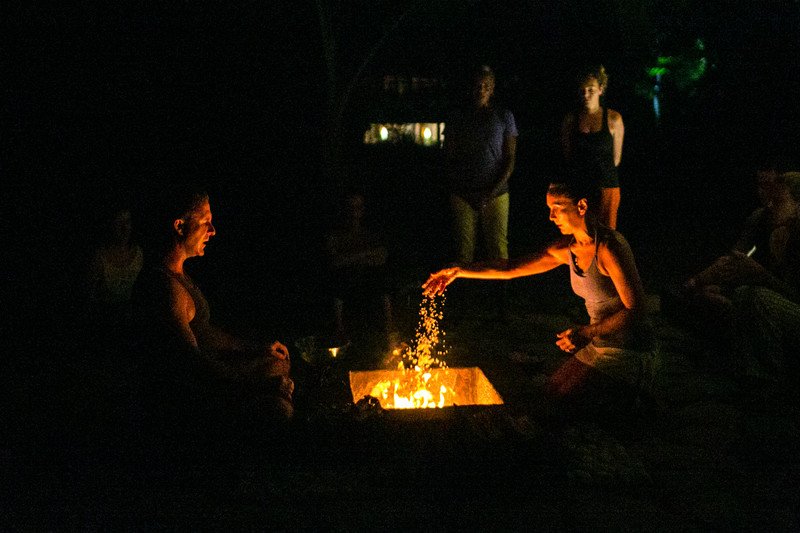
Kundalini Yoga believes in awakening the spiritual ‘kundalini energy’ in the body; often, this includes chanting and pranayama alongside repeated movements. Kundalini Yoga tends to be more spiritual than other types of yoga and involves a fast-paced series of postures.
You will work your body, mind, spirit as you perform the challenging kriyas, or sequences, combining postures, breath, and sound. Expect repetitive breathing to release energy throughout the body.
The key to unlocking the power of Kundalini is through the Chakra system.
Become Deeply Rested in Yoga Nidra
Yoga Nidra is ‘yogic sleep,’ a specific yoga technique and state of mind that requires your body to relax and listen fully. It works at the hypnagogic state to clear, balance, and harmonize the four aspects of the yogi mind. You can learn more at our article on the Yogi Mind here.
ASK THE TEACHER:
What are their teaching values? How do they approach a class? What do they enjoy sharing with others when they teach? What aspects of the movement, breath, and mind intrigue them?
Find an authentic yoga teacher, no matter your yoga type
Your yoga teacher should motivate and inspire you, both on and off your mat. They should empower you to find your path. Your teacher may align with a specific traditional school, but what’s most important is that their message and teaching style resonates with your goals.
An authentic teacher is truthful with themselves about who they are. They teach from their life experience and wisdom. Whatever their style, your teacher should prompt you to discover your truth and authentic life: what yoga types align with your true nature and path?
ASK YOURSELF:
Does my yoga teacher motivate me? Do I disagree with their teachings? What does my teacher say that makes me judgmental or annoyed?
Spirituality in different types of yoga classes
While yoga is not a religion, some yoga types do draw on traditions from Hinduism and Buddhism. For example, Jivamukti uses traditional Sanskrit scriptures in yoga classes, and Yin Yoga teaches philosophies that stem from Buddhism.
I recommend you bring your yogi attitude of non-judgment to every yoga class. The Ascended Masters taught unity and oneness — regardless of religion. Your path to unity is yours alone, whether you choose to engage with the spiritual aspects of yoga or not.
ASK YOURSELF:
What are your values? What morals do you follow? Do you have specific spiritual beliefs? Are you a seeker?
The takeaway
Remember…
The different types of yoga aren’t as important as why you’re practicing yoga. So, show up and bring awareness to your body, breath, and mind. Be open to new styles of yoga and willing to practice different yoga types — sometimes in the same class! Work to tame your senses, turn inward, and find the spacious peace that resides within.
Now, are you ready to discover the style of yoga that works for you? Do you want one-on-one support in a beachfront paradise, where you can swap the daily grind for barefoot ease?
Discover our custom beach yoga retreats and develop a yoga practice that will stay with you no matter what life throws your way.


